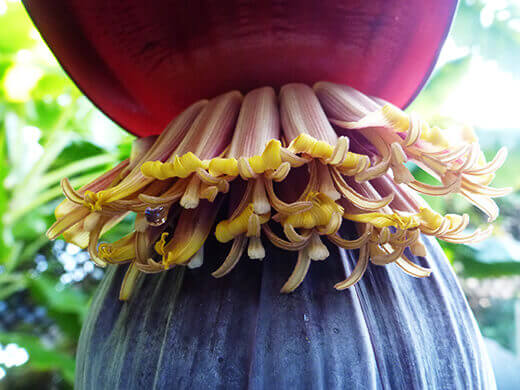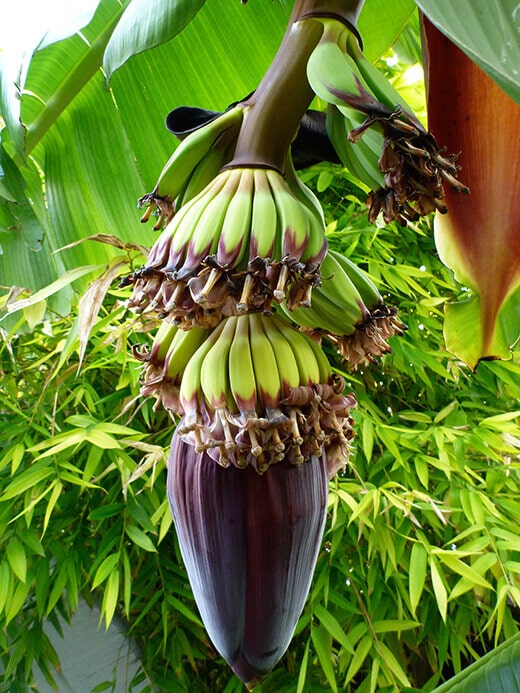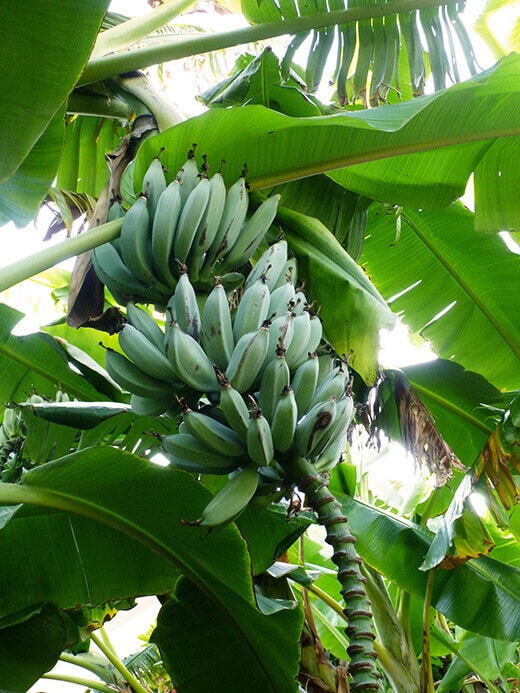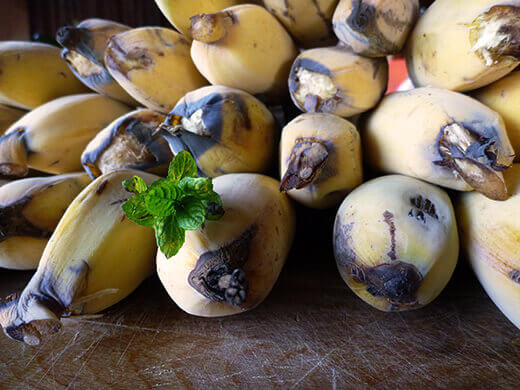Commercially grown bananas are green, hulking, 8-inch-plus behemoths with nary a spot on their smooth, firm skin.
Homegrown bananas—at least in my home—are half that size, and so cute and plushy that you want to poke a finger into their freckled skin like the Pillsbury Doughboy.
While some sources say that bananas lose texture and flavor as they’re left to ripen on trees, I don’t always agree. After eating many a store-bought banana that has ripened off the plant, that first tree-ripened (or more accurately, stalk-ripened) banana from my backyard tastes like a creamy marshmallow. (Though bananas do occasionally split open when they’re too ripe, so I try not to let them get to that point.)
In fact, my favorite campfire dessert is a banana, split in half and stuffed with mini marshmallows, chocolate chips, and peanut butter, then wrapped in foil and roasted over a fire. Talk about creamy.
But I digress. It didn’t seem so long ago that I was looking at a bloom of beautiful banana flowers. Banana berries (remember that nifty tidbit?) soon appeared, and seemingly overnight an entire bunch had ripened and I couldn’t eat all the bananas fast enough.




Long before settlers in the Americas ever tasted a banana in the 16th century, the fruit was cultivated throughout Southeast Asia, the Middle East, and Africa. But the banana of the time was far from the perfect Chiquita banana we see today.
The early banana was small and modest, about the size of a man’s finger. It is believed that Arab slave traders, who also traded ivory and bananas, coined the crop banan, the Arabic word for finger. So, it makes sense that an individual banana is referred to as a “finger” on a “hand” of bananas.
But long, long before those farmers and traders ever hawked bananas, the Greek philosopher and botanist Theophrastus (a student of Aristotle) recounted a folk legend of three wise men who sat under the shade of a banana tree and ate its fruit. This myth led to the now-obsolete botanical name of the banana, Musa sapientium, which translates into “banana of the sages.”
This wisdom carried over into other cultures, too. According to Hindu legend, the banana was the forbidden fruit from the Tree of Knowledge of Good and Evil in the Garden of Eden. After the Fall of Man, Adam and Eve covered their naked bodies with banana leaves rather than skimpy fig leaves (as we know them). To this day, a banana is often referred to as a fig (or figue) in the West Indies.
Carl Linnaeus, the father of Linnaean taxonomy, classed one form of the banana as Musa paradisiaca, an archaic scientific name that translates into “banana of paradise.” Early European names deriving from the Middle Ages include apple of paradise, fig of Eve, and fig of Adam, as well as the French fig du paradis (fig of paradise).
But as they say… a banana by any other name would taste as sweet.
















Who knew bananas could be so interesting? I am sooo jealous of your beautiful banana trees.